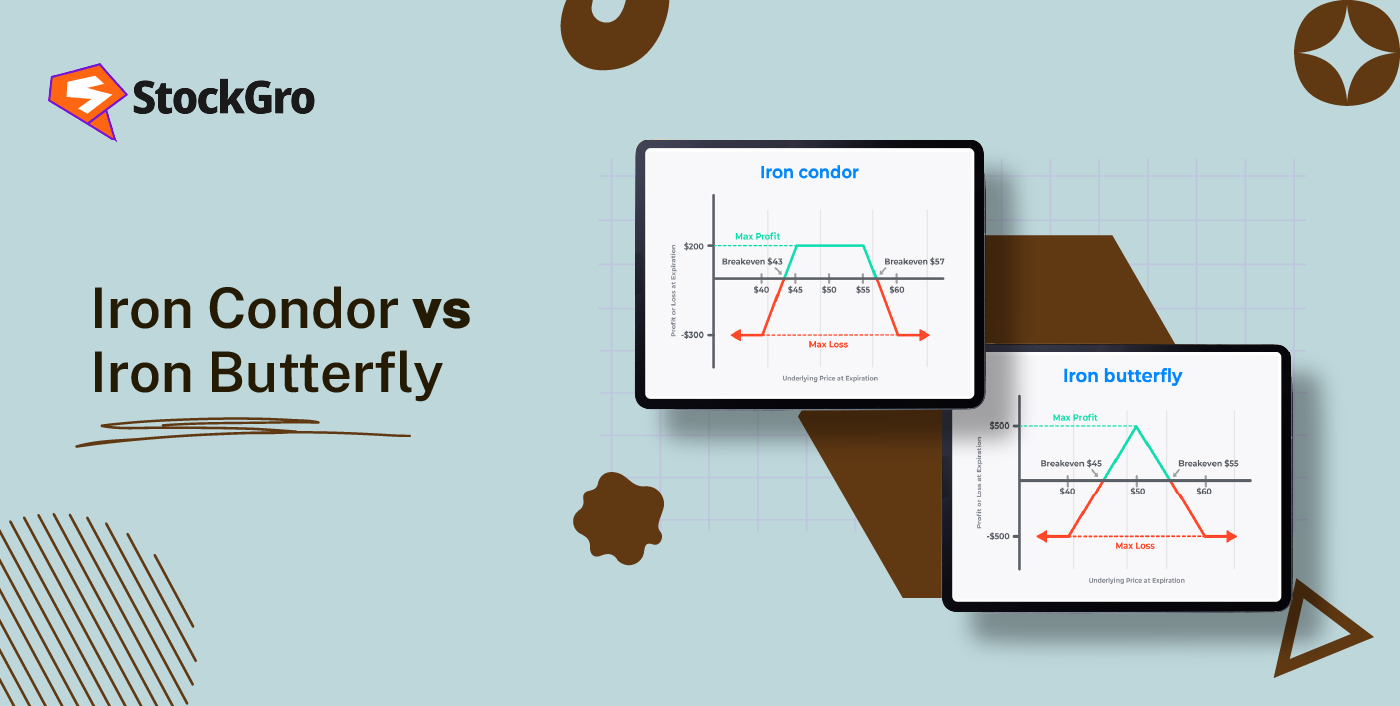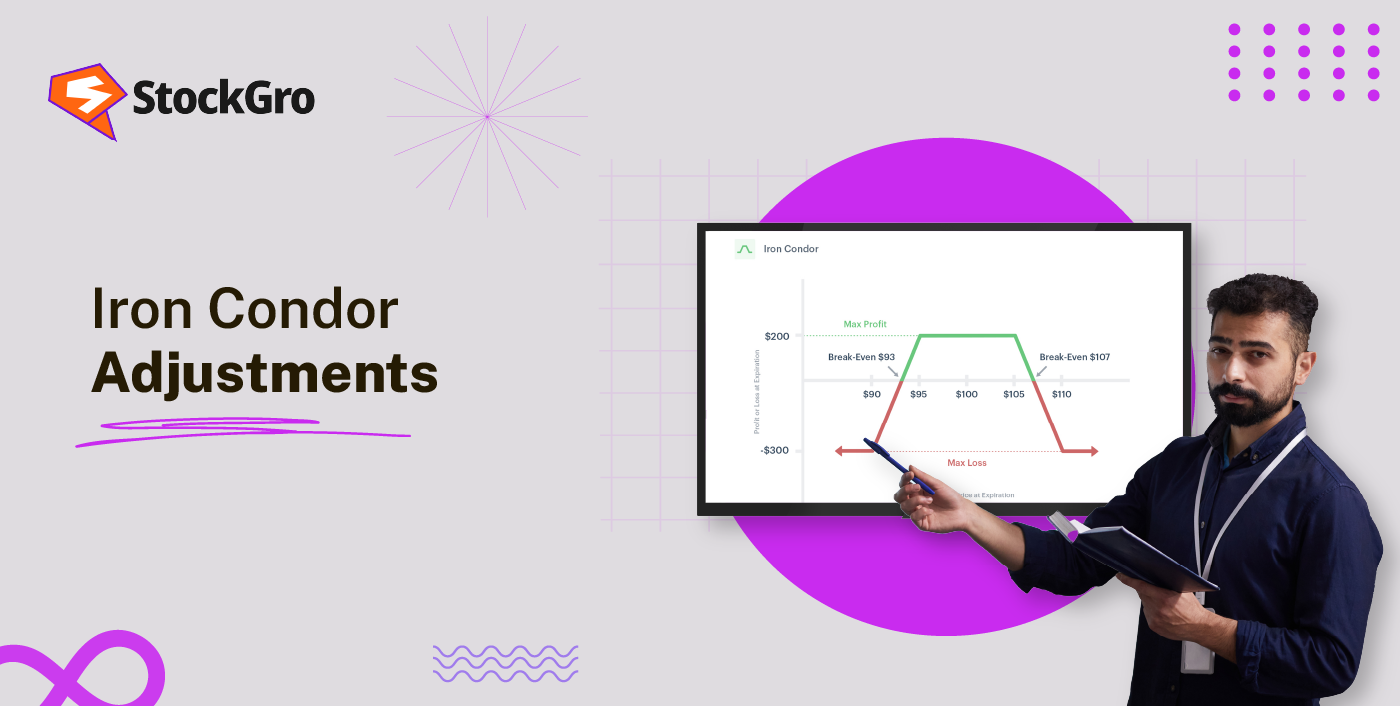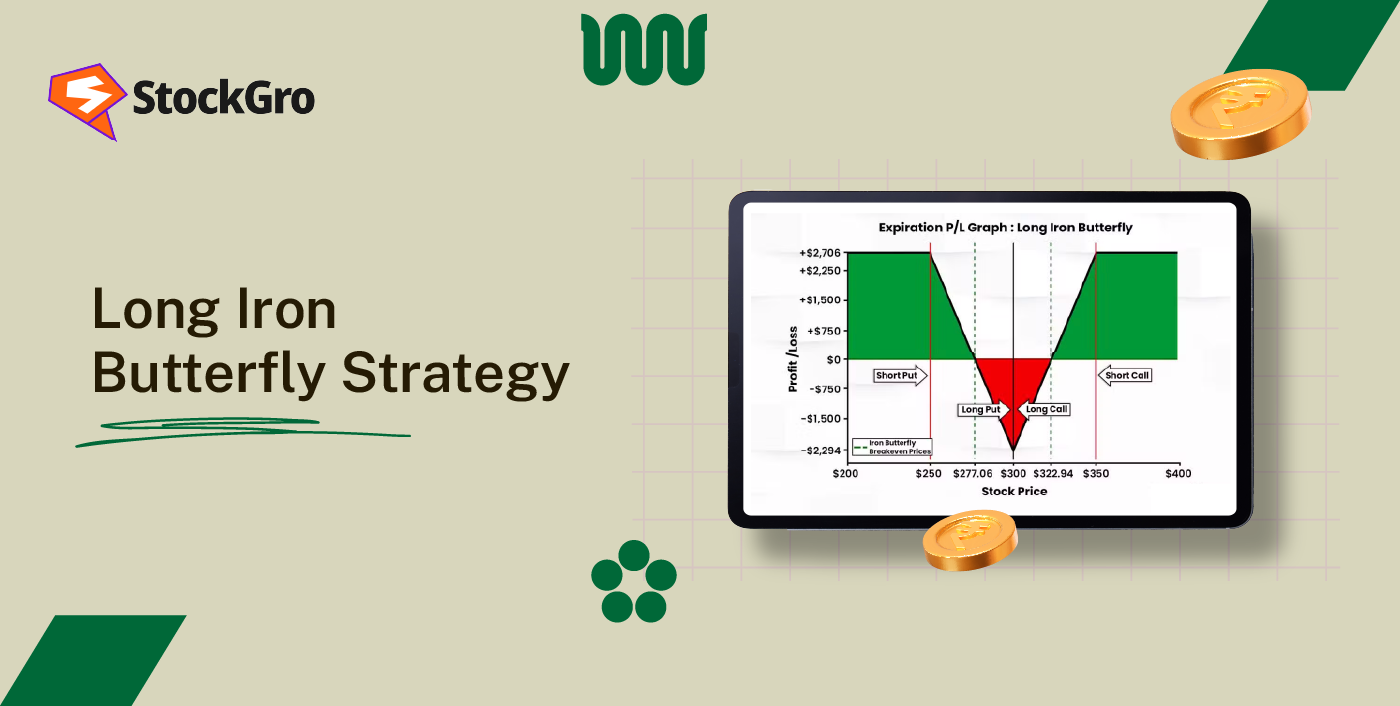
In the field of options trading, strategies such as the Iron Condor and Iron Butterfly are commonly used by traders looking for income with limited risk. Whereas both are based on selling spreads to gain from small price changes, their compositions, risk characteristics, and suitable market environments differ considerably. We are going to go through each of them, contrast them, and look into the situations in which one was best for traders in this article.
What is an Iron Condor?
An Iron Condor is an options trading strategy, which means the trader uses a combination of a bull put spread and a bear call spread consisting of four different options (two calls and two puts) that have the same expiration date but different strike prices. It creates a return when the underlying asset stays within a specific price range; however, the risk and reward are both limited.
What is an Iron Butterfly?
Iron Butterfly is an option trading method that incorporates four option contracts on three different strike prices with the same expiration date. The method step is to sell an at-the-money call and put, and at the same time, buy out-of-the-money call and put options as a hedge. The goal of this approach is to gain when the underlying asset’s price is still around the middle strike price, thus giving limited risk and reward within a certain range.
Iron Condor vs Iron Butterfly: Key Differences
Iron butterfly strategy employs the same short strike to both, call and put options. By contrast, iron condors vary short strikes for options respectively. The Iron Condor and Iron Butterfly are multi‑leg, defined‑risk options strategies that have the same goal, however, they are different in construction, profit zones, and the potential of premiums.
| Feature | Iron Condor | Iron Butterfly |
| Number of strike prices | Four distinct strikes (two calls, two puts) | Three strike prices (short call and put at same strike) |
| Short option placement | Short call and short put placed out-of-the-money | Short call and short put placed at-the-money |
| Long option placement | Long call and long put placed out-of-the-money for protection | Long call and long put placed out-of-the-money for protection |
| Profit range | Broader, due to wider strike placement | Narrower, centred around the middle strike |
| Breakeven point | Farther apart | Closer together |
| Net premium collected | Typically lower | Usually higher |
| Sensitivity to price movements | Less sensitive to small price changes | More sensitive to small price changes |
Iron Condor vs Iron Butterfly: Risk & Reward Comparison
The Iron Condor and Iron Butterfly are two of the same types of options strategies, with the maximum and minimum risk, which differ in risk and reward characteristics due to the way they’re designed.
Iron Condor
Risk: The maximum loss occurs in case the price of the underlying asset moves beyond the outer strike prices, either higher than the highest call or lower than the lowest put. Losses can be covered by the difference between the sold and bought strikes, less the received premium. The breakeven points are further apart, thus allowing the price to be within a wider range before the loss.
Reward: The maximum profit is the net premium collected at entry, which is realised if the underlying closes between the inner short strikes at expiration, thus all options expiring worthless. The wider berth is usually related to a smaller upside.
Iron Butterfly
Risk: The loss of the highest value happens if the price moves a lot in one particular direction and the only long option is left with some value. The loss is limited to the difference between the strike width and the premium given. The breakeven points are closer together, resulting in a narrower profitable area.
Reward: The profit is the net premium paid, which occurs if the underlying finishes the same as the short strike at expiration.
| Aspect | Iron Condor | Iron Butterfly |
| Maximum Risk | Wider loss range, risk capped | Narrower, risk capped |
| Maximum Reward | Lower premium, profit capped | Higher premium, profit capped |
| Breakeven Points | Further apart, broader zone | Closer together, narrower zone |
| Key Dynamic | Lower reward, higher probability | Higher reward, lower probability |
When to Use an Iron Condor
The Iron Condor strategy is generally used for stable markets where the price of the underlying asset is rangebound and there is low to moderate volatility. The position gains from theta decay if the prices stay in between the inner strike prices until the expiry. The area of profitability for an iron condor is broader than some other neutral strategies, however, the profit and loss are both limited within the range of strikes. It is usually not very effective during strong directional moves or volatile periods, like important economic data releases or earnings announcements.
When to Use an Iron Butterfly
An Iron Butterfly is a strategy that is typically implemented when the trader anticipates that the price of the underlying asset will stay near a particular level, most likely the strike price of the short options, up until the expiration date. This position is suitable for conditions of low volatility, where there is a small movement in the price. Its payment is at the highest point when the underlying finishes at or around the centre strike, with limited risk on both the short and long sides of the protective position. If the price significantly goes in any direction before the expiration date, then the strategy will be less effective.
Pros & Cons of Iron Condor vs Iron Butterfly
The Iron Condor and Iron Butterfly are two equivalents in idea, but contrasting in structure, profit possibility, and flexibility in the market. Below are their respective advantages and limitations.
Iron Condor
Pros:
- Wider Profit Range: The Iron Condor represents a broader range of potential profit, as its breakeven points are further apart, allowing for larger price movements in the underlying asset.
- Defined Risk and Reward: Carrying out fixed credit spreads guarantees that the gains and losses are limited at entry.
- Flexibility Across Volatility: The distance between strike prices can be changed to some extent, thus providing the possibility of adaptation to the expected volatility or chosen risk.
Cons:
- Lower Maximum Profit: The premium received is generally lower than that of an Iron Butterfly, hence the profit potential is more modest for each trade.
- Higher Margin Requirement: Because the strikes are spread wider, margin or capital requirements can be larger compared to an Iron Butterfly with similar width spreads.
- Profitability Impacted by Volatility Changes: Changes in implied volatility, especially near the end of the period, could turn the situation less advantageous for the position.
Iron Butterfly
Pros:
- Higher Maximum Profit: This strategy is designed to collect a larger premium, which in turn results in a higher maximum possible gain if the underlying asset finishes at the middle strike at expiration.
- Lower Margin Requirement: Generally, the closer the strike prices, the lower the margin requirement, resulting in a smaller requirement for the position.
- Defined Risk and Reward: The maximum loss and gain that are generated at the beginning, structured by the selected strike prices, set the limit.
Cons:
- Narrower Profit Range: The profit area is located near the middle strike, thus giving the chance of a smaller error if the underlying price goes away from this level.
- Greater Sensitivity to Price Fluctuation: The position’s small range means that any minor changes in the underlying asset can quickly reduce the profit or turn it into a loss.
- Implied Volatility Exposure: The wide variations in implied volatility will decide the fate of the position, especially when expiration is near and the market is around the break-even points.
FAQs
The Iron Condor definitely is a four strike price strategy; thus, it allows for profit within a larger range of prices, and it can handle bigger price swings, whereas the Iron Butterfly is a three strike price strategy that offers higher potential reward within a limited range. Both of them have a limited risk and reward, but they differ in terms of price sensitivity, complexity of structures, and the types of market conditions where they work best.
Between the two, the Iron Butterfly normally has a higher risk because it has a narrower range between the breakeven points and the shorts are at-the-money. This, in turn, makes it less resistant to price changes, as losses can materialise quickly if the asset underlying moves in a direction other than the centre strike. The Iron Condor, which has a wider range between the strikes, usually carries lower risk and is more tolerant of price changes until it reaches the loss point.
In markets lacking major price trends, the Iron Condor typically provides a larger range of potential gains because the strike prices are located at greater distances from each other, thus enabling more price movements without negative consequences. The Iron Butterfly has a smaller profit region that is focused on the middle strike price, and hence, the underlying price can only be a bit different from that level for the strategy to work. Both strategies gain from low volatility but differ in their tolerance for the range of price changes in sideways periods.
It is possible to tweak an Iron Butterfly similarly to an Iron Condor by changing strike prices or expiration dates so that you may end up with wider profit areas and higher premiums. However, the nature of the three-strike structure with short options at the money implies that we may get fewer changes for the Iron Butterfly compared to the Iron Condor’s four-strike spread, which, by its very nature, provides a broader range for changes and risk management.

